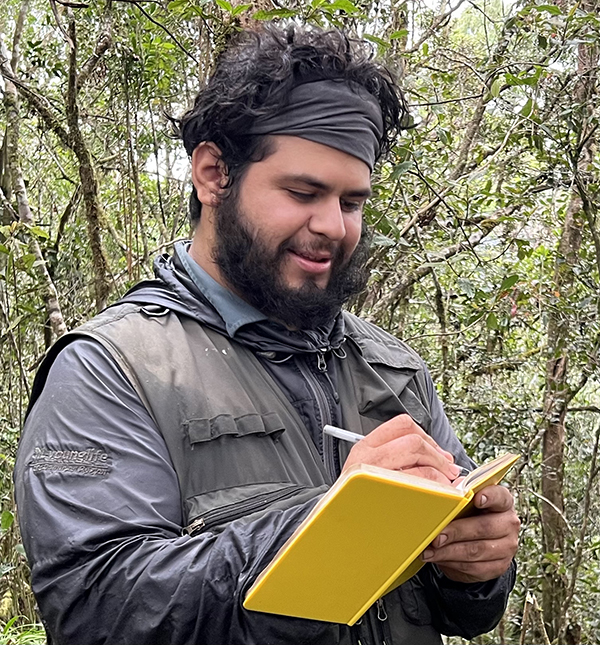World Lemur Day – October 27 2023
Mitchell Irwin, Dept. of Anthropology, NIU
Edgar Villeda, Dept. of Anthropology, NIU
Phaner, Mirza, Kotraika, Sadabe, and even the hairy-eared dwarf lemur – they may sound like comic book characters, but these are all names of different lemur species. Most people, if they know about lemurs at all, recognize the ring-tailed lemur – aka, King Julian. This species is found in many zoos because it is a flexible eater that adapts well to captivity. But what many don’t realize is that there are more than 110 lemur species, ranging from the 2-ounce mouse lemur to the 13-pound Indri, each with its own distinct look, ecology and way of life.
Every year, the last Friday of October marks “World Lemur Day”, when lemur scientists like us do all we can to remind people about these unique creatures. One reason this is so important to us, and to others, is that lemurs are barreling towards extinction – 98% of those species are listed by the IUCN as threatened, and 31% fall into the highest-risk category, critically endangered. All are restricted to Madagascar and a couple of nearby islands – and sadly, this wonderfully rich country in terms of culture and biodiversity is also one of the world’s poorest. The rapidly growing human population frequently encroaches on wild habitats for subsistence agriculture, often because there are few other options. This means that the solutions needed for preserving lemur habitat while also protecting human rights and livelihoods are challenging to pursue.


Here at NIU, our lab group does research that is designed to understand lemur adaptations and diversity while also protecting their populations. Just like us, primates need a diet that is both adequate in calories, and varied – a healthy mix of carbohydrates, proteins and fat with vitamins and minerals too. But one thing that’s different about wild lemurs is that their food availability varies so much across the year. In the winter, some lemurs capture only a quarter of the caloric intake they achieve in rich months – a very lean reality that they seem to just barely squeak through. When habitats are disturbed by selective logging, a lot of key foods are lost and we have shown that diets decline in quality – and the animals show reduced growth and body fitness. This bodes poorly for future survival, especially when we consider that global climate change is also likely to affect the availability of the foods they rely on.
One of the issues we still are tackling is that wild lemurs, like most non-human animals, eat food with some particularly nasty chemicals inside. This is especially true for folivores (leaf-eaters): trees love the fruit-eaters that disperse their seeds, but do all they can to make life difficult for the folivores that munch on their leaves. These leaves are often loaded with toxins, which essentially poison the lemur, or digestion inhibitors like tannins, that interfere with digestion. Our lab group focuses on the diademed sifaka, and we’ve found out that its leaves have such high levels of tannins that it seems they shouldn’t be able to access any protein in their leaves at all. Yet… they are, because they are surviving. Current Anthropology graduate student Edgar Villeda has set up a multidimensional research project to solve this mystery. He is searching for tannin-deactivating proteins in sifaka saliva, as well as culturing live microbes from their feces to see if those microbes are deactivating those tannins during digestion. Until we know better how much protein they’re actually getting, it is impossible to know how close they are to protein starvation and eventual population decline. If they’re living on the edge, we want to know!

Even though all this is unfolding halfway around the world, there are still ways to get involved. You can spread the word – tell a friend or family member something you just learned about lemurs. Familiarize yourself with the many governmental and non-governmental agencies engaging in lemur research and conservation – the Lemur Conservation Network webpage is a great place to start. Finally, get involved here at NIU by taking classes in the Department of Anthropology, or just drop by and meet Professor Irwin or some of the graduate students working on solving lemur problems!



